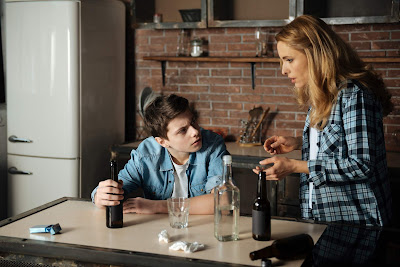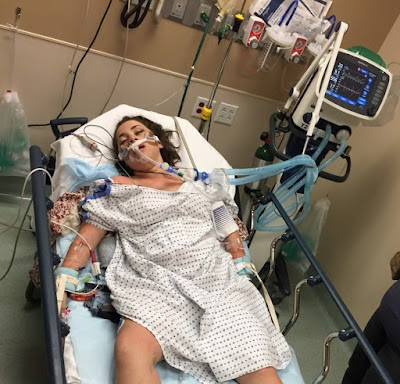Buying drugs via social media apps: They're all just a click away!
None of the stories are unique and although the available evidence clearly shows that the vast majority of school-based young people do not illicit drugs, some teens will experiment and will suffer the consequences if they get caught. What blew me away about all these cases, however, was that each and every one of these teens purchased their drugs via social media apps.
"When we asked her how she accessed the ecstasy she had no hesitation in telling us that she got them through Snapchat. She had been told by a friend about a guy who would give her a good deal if she bought enough of them and so made contact. They agreed to meet at the local shopping centre and the deal was done. When we asked her wasn't she worried about who this person was and what could have gone wrong, she just told us that everyone does it and that it wasn't a big deal!" - a Dad of a 15-year-old who got caught selling MDMA at school and was subsequently expelled
"We only found out what he was doing through pure luck. Our 16-year-old son was meant to be playing video games with friends in the back room when my husband happened to see him walk out to the mailbox and then run back inside. It just looked a little suspicious. About 15 mins later a motor scooter pulled up to the mailbox, parked for a second and then left. Before our son had the chance we ran out and found a small bag of cannabis that had been placed inside. When we confronted him he eventually told us that he and his friends had bought the drug via Snapchat. He'd been instructed to leave the cash in the mailbox and the cannabis would be left for him. Apparently, he'd been doing it for weeks." - a Mum of a 16-year-old
"Our daughter has been pushing boundaries since she was in primary school but when she was caught buying and selling cannabis and Valium at the local train station by police we couldn't believe it. We were called to the police station and told she had basically been running a business via WhatsApp." - a Mum of a 14-year-old
It really shouldn't be a surprise that illicit drugs are now being accessed this way. Although there is still the belief that 'evil drug dealers' lurk at the school gate waiting to lure innocent children into a world of drug use, the reality is that most young people who use drugs usually access them through friendship networks. Someone knows a friend, who knows someone else who can get something. What has happened is that those friendship networks have now moved online and, just like everything about the online world, it moves faster and more efficiently, resulting in greater access and availability.
This is not a new phenomenon, there have been media stories circulating about this issue for the past few years, but it appears as if it's been 'cranked up a gear' by the pandemic and subsequent restrictions. It's also the first time I've heard of such young teens being involved. Some of these deals involved meeting strangers at train stations, shopping centres and fast food outlets, but most involved home delivery. Snapchat was the platform that parents were most likely to identify as the one used by their child. Its appeal seems to be that not only can it connect buyers with a seller, the self-deleting feature of 'snaps' is particularly attractive to them as it also seemingly removes evidence of transactions.
Parents were totally floored by how easy it was for their teens, some as young as 13, to access such a wide range of substances. Of course, there were the usual ones – cannabis, ecstasy (MDMA) and cocaine, but in some cases very young people were purchasing drugs like ketamine and DMT. Even more concerning were the number of parents who reported that their child had been buying (and in some cases, then on-selling) prescription medication such as Valium and Xanax.
When one mother picked her 15-year-old son up at the local police station she was asked whether she had been monitoring his mobile phone use. She said she had done her best but, not surprisingly, it had been difficult to do. She was then shown some of his texts sent through 'WhatsApp' and had them explained to her. They were full of emojis and on the face of it seemed to be relatively innocent. In fact, most of them were drug deals – either he was ordering drugs from suppliers or confirming drop-offs for others. Just as 'slang words' have been used to disguise when talking about drugs (e.g., "Can you make sure you bring Pearl (or Charlie) over tonight?" meaning that you want cocaine, "How many tickets are you after?" could refer to how many pills or caps you want to buy), 'slang emojis' can be used in a similar way.
Earlier this year, Dr Laura Berman from the US made headlines across the world after her 16-year-old son died from an overdose after using drugs he bought via Snapchat. In an Instagram post, accompanied by a list of commonly used emojis and their meanings she wrote the following:
"Teens today talk about drugs in a language they're fluent in – emojis. Instead of writing out words and structuring sentences, teenagers and young adults are using emojis to express thoughts or emotions in conversations with their friends and online strangers. So, it's important that parents become educated on the language our kids are speaking."
That's easier said than done. Keeping up with ever-changing world of teens, particularly when it comes to technology, is almost impossible and they'll almost always be at least one step ahead of you. But that doesn't mean that you shouldn't try your best.
Once again, I want to stress that most school-based young people are not interested in using illicit drugs. There is no evidence that drug use is spiralling out of control but access and availability is an issue. There are so many wonderful things that the Internet and social media have provided us but they certainly have made drugs, no matter whether they be legal, illegal or pharmaceutical, so much easier to access if you want them.




Comments
Post a Comment